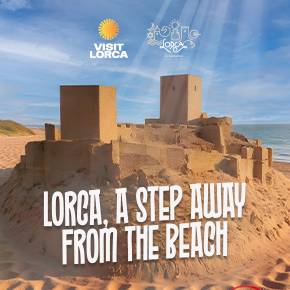- Region
- Águilas
- Alhama de Murcia
- Jumilla
- Lorca
- Los Alcázares
- Mazarrón
- San Javier
-
ALL AREAS & TOWNS
- AREAS
- SOUTH WEST
- MAR MENOR
- MURCIA CITY & CENTRAL
- NORTH & NORTH WEST
- TOWNS
- Abanilla
- Abarán
- Aguilas
- Alamillo
- Alcantarilla
- Aledo
- Alhama de Murcia
- Archena
- Balsicas
- Blanca
- Bolnuevo
- Bullas
- Cañadas del Romero
- Cabo de Palos
- Calasparra
- Camping Bolnuevo
- Campo De Ricote
- Camposol
- Canada De La Lena
- Caravaca de la Cruz
- Cartagena
- Cehegin
- Ceuti
- Cieza
- Condado de Alhama
- Corvera
- Costa Cálida
- Cuevas De Almanzora
- Cuevas de Reyllo
- El Carmoli
- El Mojon
- El Molino (Puerto Lumbreras)
- El Pareton / Cantareros
- El Raso
- El Valle Golf Resort
- Fortuna
- Fuente Alamo
- Hacienda del Alamo Golf Resort
- Hacienda Riquelme Golf Resort
- Isla Plana
- Islas Menores & Mar de Cristal
- Jumilla
- La Azohia
- La Charca
- La Manga Club
- La Manga del Mar Menor
- La Pinilla
- La Puebla
- La Torre
- La Torre Golf Resort
- La Unión
- Las Palas
- Las Ramblas
- Las Ramblas Golf
- Las Torres de Cotillas
- Leiva
- Librilla
- Lo Pagan
- Lo Santiago
- Lorca
- Lorquí
- Los Alcázares
- Los Balcones
- Los Belones
- Los Canovas
- Los Nietos
- Los Perez (Tallante)
- Los Urrutias
- Los Ventorrillos
- Mar De Cristal
- Mar Menor
- Mar Menor Golf Resort
- Mazarrón
- Mazarrón Country Club
- Molina de Segura
- Moratalla
- Mula
- Murcia City
- Murcia Property
- Pareton
- Peraleja Golf Resort
- Perin
- Pilar de la Horadada
- Pinar de Campoverde
- Pinoso
- Playa Honda
- Playa Honda / Playa Paraíso
- Pliego
- Portmán
- Pozo Estrecho
- Puerto de Mazarrón
- Puerto Lumbreras
- Puntas De Calnegre
- Region of Murcia
- Ricote
- Roda Golf Resort
- Roldan
- Roldan and Lo Ferro
- San Javier
- San Pedro del Pinatar
- Santiago de la Ribera
- Sierra Espuña
- Sucina
- Tallante
- Terrazas de la Torre Golf Resort
- Torre Pacheco
- Totana
- What's On Weekly Bulletin
- Yecla


- EDITIONS:
 Spanish News Today
Spanish News Today
 Alicante Today
Alicante Today
 Andalucia Today
Andalucia Today
article_detail
Spanish News Today Editors Roundup Weekly Bulletin Apr 25

TOP STORIES: "The Pope is dead. What now for Spain?" & "Spain faces floods as Europe sets new heat record"
Hello again! Our biggest news of the week comes not from Spain but from just across the Mediterranean Sea, in the tiny country nestled within Italy’s capital city. This is the death of the Pope in the Vatican, the predictable culmination of a slow decline we have been watching for many weeks now, which has reverberated around the world over the last four days and will have major repercussions on the direction of one of the world’s most powerful international religious organisations for years to come (there’s the Spain connection!).
So we’ve got a long section on that for you this week, plus the usual mix of Murcia, Spain, Alicante and Andalucía news you’ve come to expect.
RIP Pope Francis
First thing this Monday morning, the world learned that its foremost spiritual leader – matched only for cultural significance and sheer recognisability, perhaps, by the Dalai Lama – had died. The death of Pope Francis on Easter Monday marks the end of a remarkable and transformative era in the history of the Catholic Church, and for twenty-first century values and politics, divided and divisive as they may be.
Born Jorge Mario Bergoglio in Buenos Aires, the man the world came to know as Francis passed away peacefully at the age of 88 following complications from pneumonia. True to the humility that defined his papacy, he died in Casa Santa Marta – the humble Vatican guesthouse he chose as his home over the grandiose Apostolic Palace.
His final public appearance had come just hours earlier, when he gave the traditional Easter Sunday blessing from the balcony of St Peter’s Basilica and had driven in the Popemobile through the square, blessing the faithful.
Francis led the Church for 12 years, one for each of the Apostles, during which time he sought to open its doors wider to the modern world. His leadership was grounded in compassion, simplicity and inclusivity. He championed causes often overlooked by religious institutions – the environment, social justice, the plight of migrants and the dignity of marginalised groups, including the LGBTI community.
He embraced interfaith dialogue, building bridges with Jewish, Muslim and Buddhist communities. For many, especially those outside the Church, he came to symbolise the possibility of a more human, empathetic and outward-looking Catholicism.
He broke with tradition not just symbolically, but structurally. He reformed the Roman Curia, gave women and laypeople more prominent roles in Church governance and attempted (with mixed success) to bring greater accountability to the Church’s handling of sexual abuse. And yet, there were moments when his message seemed to tread a fine line – clear in tone but cautious in policy.
He was about as liberal as you could get for the head of what is a deeply conservative institution, and that ruffled a lot of feathers amongst many in the Catholic Church, something that never seemed to bother him.
As a layman back in Argentina, before he even joined the clergy, his story is fascinating, and bears looking at in more depth than we can grant it here. He worked as a nightclub bouncer for a time; he was engaged to be married before he took his vows of celibacy as a Jesuit priest; he was heavily involved in Argentinian left-wing politics and was a controversial figure even then. Worth picking up a biography on, if you can.
The response to his death has been global. From the world’s 1 billion Catholics, of course, and outpouring of grief. But from the rest of the world, even in non-Catholic countries, a kind of stunned reverence for the man such as was never afforded his predecessor Pope Benedict XVI, along with an almost fetishistic fascination with the whole mysterious, enigmatic and ritualistic process that takes place in the Vatican when a pope dies.

In Spain, a country with deep historical ties to Catholicism and where over half the population still claims to be Catholic, if not practising, three days of mourning have been declared. Regional and national figures have publicly honoured his legacy, and the Spanish royal family will attend his funeral in Rome this Saturday, though President Pedro Sánchez will not, preferring instead to send his underlings – a move that has drawn some domestic attention.
The Pope’s body has lain in state in St Peter’s Basilica all week, with thousands of his followers and the merely curious queuing for hours to pay their respects to him.
His funeral takes place this Saturday, which you can watch live on the Vatican’s official website or probably on any single television news channel in the world. A host of global dignitaries will be present, from US President Donald Trump to Prince William and Keir Starmer representing the UK. Following the service, Pope Francis will be buried in the Basilica of Santa Maria Maggiore, fulfilling his personal wish to rest in one of Rome’s oldest and most beloved churches.
Attention now turns to what comes next. The period between the death of one pope and the election of another – the period known as ‘Sede Vacante’ (vacant seat) – has begun, with Cardinal Kevin Farrell overseeing day-to-day matters at the Vatican until a new pope is chosen.
This is the famous and mystery-shrouded conclave, held in the imposing Sistine Chapel where 140 cardinals lock themselves inside the great church and don’t emerge until they have selected by ballot the new leader of the Church and God’s representative on Earth.
The film ‘Conclave’ was released not long ago and provides an excellent peek inside what a conclave actually is and what happens in one. Watch it if you can, but if you can possibly read the book by Robert Harris first then do because, as is so often the case with these things, the book is better than the film.
For this conclave, a large majority of the cardinals eligible to vote (those under the age of 80), were appointed by Francis himself. This makes it likely – though not certain – that his successor will reflect at least some of his pastoral and reformist outlook.
Spain will be well represented in the conclave, with several cardinals eligible to vote. While Spanish cardinals are not usually tipped as frontrunners to be the next pope, figures such as Juan José Omella of Barcelona and José Cobo Cano of Madrid have strong pastoral credentials and align closely with Francis’ vision. Their presence in Rome underscores Spain’s enduring role in the global Church, even as its Catholic population becomes more secularised.
Speculation is, of course, inevitable. Other possible successors include figures like Pietro Parolin and Matteo Zuppi of Italy, Cardinal Tagle of the Philippines, and Cardinal Sarah of Guinea. But the conclave is an unpredictable process, steeped in tradition and guided, at least in principle, by discernment rather than ambition.
Pope Francis was the first ever pope to hail from Latin America and the first non-European pope since the 8th century. It’s only a matter of weeks before we discover whether we might be in for the world’s first Black Pope, or a Filipino Pope, or a much younger pope than ever before, or whether the Church will once again turn to an old, white European man to be its public face.
As the Church and the world enters this time of mourning and transition, many will reflect on the legacy of a man who, though never without controversy, sought to bring a more human face to one of the world’s oldest and most powerful institutions. The next pope may continue that journey – or not.
For now, the faithful, and many beyond, look to Rome with gratitude for a life lived in service, much like other beloved public figures such as Queen Elizabeth II, and with quiet hope that the spirit of Francis will echo in the choice to come, if not perhaps carry the force and charisma that embodied the recently departed Cardinal of Rome, as he preferred to be known.
RIP
Coastal conundrum: Saving seahorses, salvaging heritage and surviving tourism
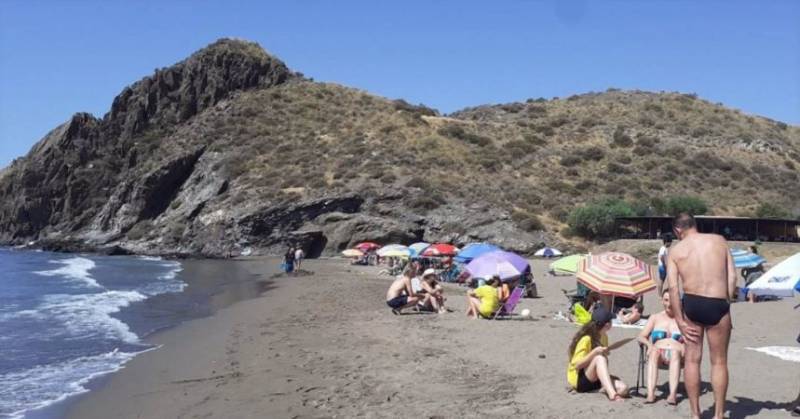
Spain’s thousands of kilometres of beaches and coastal area are – along with the historical richness of its architecture and its food – defining aspects of what comes to mind when people think of ‘Spain’. But parts of the country are sadly, and perhaps not altogether surprisingly, suffering serious and worsening environmental concerns in their coastal communities.
Seahorses once bobbed happily through the Mar Menor’s shallow waters, but now spotting one is about as rare as finding a great white shark there. In fact, during 17 dives this year, conservationists found just six adults. That’s down from 200,000 in 2012, a dramatic population crash that José Luis Alcaide, president of the Hippocampus Association, has been sounding the alarm about for years.
And while the Ministry for Ecological Transition still dithers over whether to list the seahorse as officially threatened, the scientific world has taken note. Their long-term data was recently validated by the Journal of Fish Biology, lending some academic gravitas to what has essentially been a two-decade exercise in conservation heartbreak.
You can take your pick of possible culprits: pollution, habitat destruction, freak weather and the invasive blue crab. There’s a breeding programme run by the University of Murcia trying to raise seahorses in captivity, but until the Mar Menor is fit for fish again, those little tank-bred babies are going nowhere near the open sea.
But there is a bit of success with Posidonia, those underappreciated underwater meadows in the Mediterranean that do everything from oxygenating the water to giving sea creatures somewhere to hide. These seagrass beds have been slowly recovering thanks to the ‘Plamep’ project, which is now testing robotic seed-planting in Cartagena’s Portmán.
Back on dry land (or rather, along the edges of it) the Hippocampus team has also been busy dragging tonnes of rubbish off the seabed and beaches. Literally. More than 5,100 kilos of trash have been cleared from coastal spots between the Mar Menor and Pulpí, and next up is Valencia. The area got a brutal soaking during recent floods, so divers will be combing the sea floor for debris.
On the topic of coastal damage, Murcia’s regional government has had enough of what it sees as the national coastal law trampling all over their cultural treasures. The leading PP party has proposed legal changes that would keep historically significant buildings from being swallowed up by the maritime-terrestrial public domain, a proposal that would exempt designated cultural heritage properties from being swept into state ownership and allow them to be managed under less rigid rules.
Of course, it’s a delicate dance between respecting cultural heritage and enforcing coastal protection laws, and it forces the question of whether preserving 100-year-old buildings is more important the health of the animals, plants and people currently living in these coastal areas.
At the same time, the Region of Murcia is also trying to figure out how to marry all of this with its important tourism sector, to allow tourists enjoy its natural coastal areas without trampling them into oblivion. A new study is underway to gauge exactly how many humans these protected zones can handle without collapsing under the weight of holidayers and their picnic coolers.
Survey teams are out counting cars, pestering sunbathers with questionnaires and generally trying to paint a picture of how visitors to Murcia’s beaches and coastal paths interact with nature, with the ultimate goal of arriving at a sort of eco-tourism sweet spot that lets people explore without ruining the very thing they came to see. Expect to see eco-tourism take more of a prominent role in coming years.
Murcia
Murcia can’t be stopped, or at least not when it comes to new property builds. The latest in urban development for the Region is to be found just behind the IKEA and Centro Comercial Thader shopping centre in Murcia city, where the City Council has greenlit a hefty new private urbanisation project.
Nearly 300 homes are to be squeezed into this 47,000-square-metre plot, with a chunk of that set aside for green areas. It’s all part of the grand-sounding ‘Murcia Crece’ strategy, designed to support housing demand and “sustainable growth” (that worn catchphrase that seems to signal nothing now but a virtue). This new development in Cabezo de Torres joins a long list of other areas of Murcia – especially its golf resorts – seeing a boom in construction. El Valle, Altaona, Sierra Golf, Corvera… the list goes on.
Developments are springing up across the region, and while it’s wonderful that Murcia’s skyline is set to be peppered with pristine poolside properties, there’s a slight catch: all this shiny new housing seems aimed squarely at the upper end of the market and it will not necessarily help to ease Spain’s ongoing housing crisis, where affordable housing for all sectors of society is at a minimum.
A boom in construction can be seen as a sign of a healthy real estate market, but a sceptic might note that it’s giving off pre-2008 housing bubble vibes, and anyone who remembers that era just before the financial crash might just feel a little twitchy.
Still, if you do want to live in a new-build home in Spain (or anywhere for that matter!), do make sure it’s fully legal with all the right permits in place. In Águilas, a luxurious, Grand Designs-worthy home has ended up at the centre of a police investigation. It turns out that it was built on protected rural land, and SEPRONA, the environmental wing of the Guardia Civil, swooped in and found two swanky villas and the tell-tale signs of a planned swimming pool there, without so much as a sniff of planning permission.
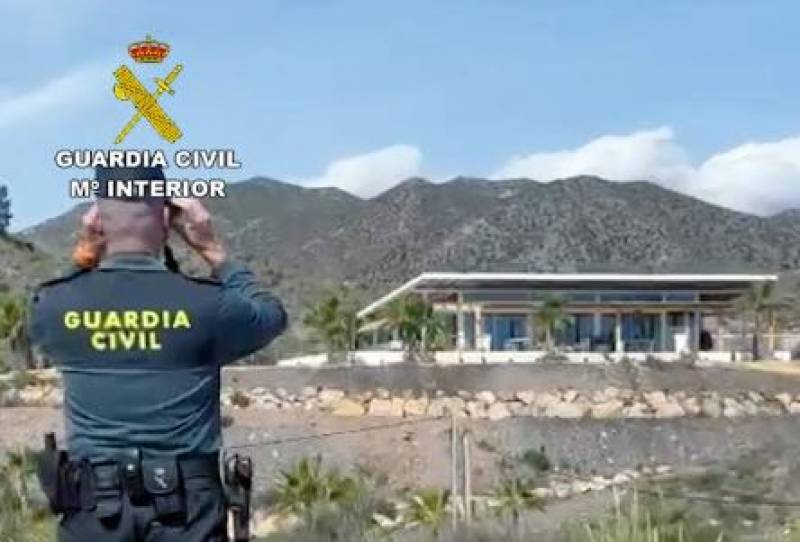 Now, the developer is facing charges under Spain’s Penal Code, which includes potential prison time and a demolition bill. And this isn’t a one-off. Similar unauthorised builds have been shut down in Mazarrón and across this stretch of southern Murcia in recent years. Makes you wonder why people would plunge hundreds of thousands into their dream construction project if they didn’t have all the paperwork in order. Sure, Spanish red tape can be a bummer, but so much so that you can’t even be bothered to jump through the hoops and would prefer to risk losing half a million to a police raid? Bizarre.
Now, the developer is facing charges under Spain’s Penal Code, which includes potential prison time and a demolition bill. And this isn’t a one-off. Similar unauthorised builds have been shut down in Mazarrón and across this stretch of southern Murcia in recent years. Makes you wonder why people would plunge hundreds of thousands into their dream construction project if they didn’t have all the paperwork in order. Sure, Spanish red tape can be a bummer, but so much so that you can’t even be bothered to jump through the hoops and would prefer to risk losing half a million to a police raid? Bizarre.Back in the more urban parts of Murcia, the real plague isn’t bureaucracy, it’s mosquitoes. Thanks to a delightful mix of spring rain and summery temperatures, the Region has been transformed into a five-star breeding ground for the little bloodsuckers, especially in areas where there are persistent puddles or where ancient ruins gather moss, drawing the mosquitoes.
And while the councils try to do their bit by spraying to kill the bugs, it is estimated that up to 80% of mosquito breeding happens on private property. So if you’ve got a neglected flowerpot or a murky birdbath, you may be hosting a mosquito maternity ward!
In Cartagena, there was a €1.3 million pest control plan, complete with door-to-door mosquito inspections and treatments. But, in true bureaucratic fashion, it’s been in limbo since the tender closed in October 2024. No winner was announced, so no treatments are underway, and it looks like the mosquito population is going to keep booming in the municipality.
And if it’s not insects or unauthorised architecture causing a stink, it’s smoke, specifically from the Repsol refinery in Cartagena. Earlier this week, thick black smoke and flames sent panic rippling across the area, with emergency lines lighting up like Christmas. Despite fears, it wasn’t an inferno, just a spot of “routine flaring” caused by a power outage. Perfectly normal, said Repsol, nothing to see here. Still, when the sky goes dark and chimneys start belching fire, one can hardly be blamed for assuming the worst. (If black smoke is for no pope chosen, and white is for a new pope, what does a chimney spouting fire mean, I wonder?)
While the powers-that-be were putting out metaphorical fires at Repsol, over in Los Nietos the residents were wrestling with a different kind of crisis – one of neglect. Once a proud coastal town, Los Nietos is now looking a bit shabby, to put it kindly. Locals complain of uncollected rubbish, crumbling pavements, broken streetlights and a seafront promenade that’s been left to rot. Promises have long been made, especially before summer seasons, but very little has actually happened.
There’s a health clinic that barely functions, a bus stop that becomes a slip hazard when it rains and market stalls perched on unpaved ground. One resident summed it up with biting cynicism: “This feels like a third-world situation.” Worse still, there’s a sense of being deliberately ignored time and time again. Ask a question, get a wall of silence.
But there is money for some improvement projects. If you’re a driver who uses the A-30 motorway, you’ll be pleased to hear that a new fourth lane is being added to ease traffic at one of its worst choke points near La Alberca. A €12 million project will widen a 1.2km stretch of road, aiming to prevent the usual morning chaos and allow those trying to exit toward the MU-30 to do so without causing traffic jams.
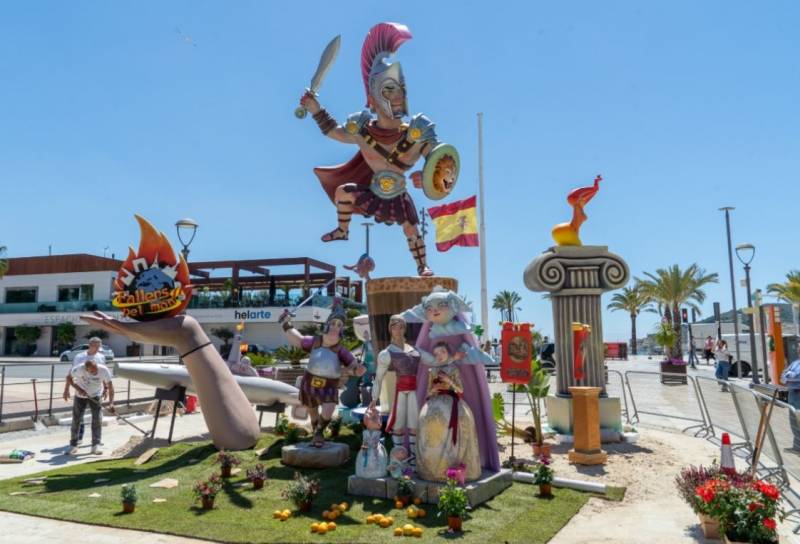 This weekend, Cartagena will host a Valencian Fallas-style fiesta, complete with mascletás – firework displays that are less about pretty lights and more about ear drum-rending explosions of sound. Think of it as a symphony of controlled detonations. This Sunday’s main event will involve 350 kilos of gunpowder and end with a crescendo of 8,000 firecrackers all going off at once. They say the trick to watching a mascletá is keeping your mouth open so your ears don’t burst.
This weekend, Cartagena will host a Valencian Fallas-style fiesta, complete with mascletás – firework displays that are less about pretty lights and more about ear drum-rending explosions of sound. Think of it as a symphony of controlled detonations. This Sunday’s main event will involve 350 kilos of gunpowder and end with a crescendo of 8,000 firecrackers all going off at once. They say the trick to watching a mascletá is keeping your mouth open so your ears don’t burst.The Fallas celebrations in Cartagena also include a more traditional fireworks show on Sunday night during the Nit del Foc, followed by the ceremonial burning of an elaborate ‘falla’ sculpture – a 30-foot roman standing atop a cup of café asiático that has been placed in the city’s port area.
For more events and activities coming up soon around the Region of Murcia, see our EVENTS DIARY:
Spain
For most of us, the Easter holidays already feel like a distant memory. Although a lucky few in regions like the Valencian Community and Catalonia enjoyed an extra day off on Easter Monday, the rest of us are now firmly back in work mode and counting down to the next break. But the good news is that you won’t have to wait too long.
Thursday May 1 is Spain’s next national holiday – Labour Day. Known around the world as International Workers’ Day or May Day, it’s a time to celebrate workers’ rights. In Spain, it’s a full-fledged festivo, meaning most shops, schools and offices will shut for the day.
What’s even better is that some regions, like Andalucía and Alicante, have opted to make Friday May 2 a non-working day too. So if you live in one of those areas, get ready for a delightful four-day weekend.
In Madrid, May 2 is a public holiday every year, commemorating the historic uprising against Napoleon’s troops in 1808. As always, store openings on these dates will vary, so it’s worth checking in with your local supermarket about their holiday hours.
Interestingly, while Spain and many other countries celebrate Labour Day in May, the US marks it in September. Still, the roots of the day are shared globally: it all goes back to major workers’ movements in the late 19th century, like the 1886 general strike in the US and the founding of the Second International in 1889.
Of course, now that we’re all back to work, the sun has finally decided to come out, and not before time. It’s been a miserable few weeks of rain, thunderstorms and biting breezes but thankfully, the weather is set to pick up over the weekend.
Since the downpours started right at the beginning of last month, you might be surprised to hear that March 2025 was actually the hottest of all time, not just in Spain, but right across Europe. Plus, it was the second warmest ever, globally, only trailing behind March 2024.
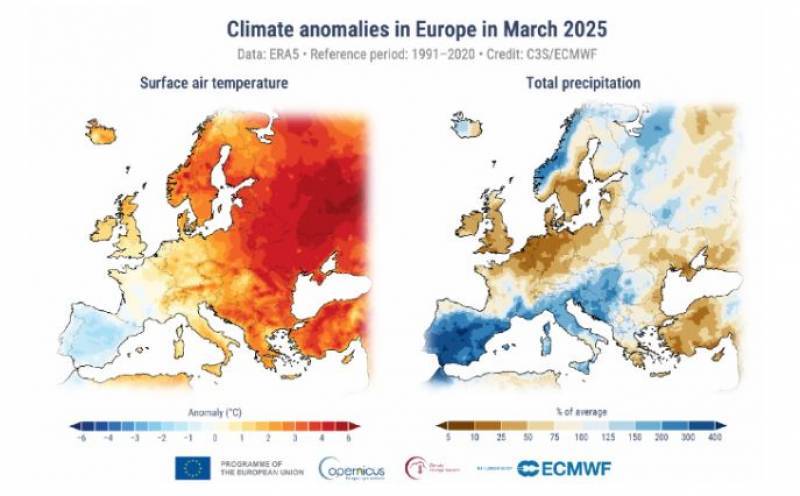
According to the Copernicus Climate Change Service, average surface temperatures were 6.03ºC above the historic norm. Alongside the heat came wildly inconsistent rainfall, as I’m sure I don’t need to remind you! Spain saw intense storms and widespread flooding, while places like the UK and central Europe experienced extreme drought.
All this is part of a disturbing trend. 20 of the last 21 months have exceeded the Paris Agreement’s key 1.5ºC warming threshold.
Now, while we’re on the topic of extremes – how about electricity prices? Easter weekend brought a rare and welcome surprise: power was practically free on Saturday April 19.
Wholesale electricity prices dropped to just €1.72 per megawatt hour, almost nothing. In fact, between 9am and 8pm, prices even hit zero or dipped into negative territory, meaning it was theoretically cheaper to run your appliances than to turn them off.
Unfortunately, those good times didn’t last. Just two days later, on April 21, prices jumped by 35% compared to the day before, showing just how quickly things can change.
And finally, back to politics. A year ago, Spain introduced sweeping Family Law reforms to support de facto couples, expand parental leave and boost aid for large or low-income families. But one area the government steered clear of is surrogacy – when a woman carries and gives birth to a child for another person.
 It’s a hugely controversial topic in Spain and a practice that is, essentially, illegal. This month, the Spanish government is doubling down on that stance. Minister for Equality Ana Redondo has announced plans to tighten the existing ban on surrogacy in Spain.
It’s a hugely controversial topic in Spain and a practice that is, essentially, illegal. This month, the Spanish government is doubling down on that stance. Minister for Equality Ana Redondo has announced plans to tighten the existing ban on surrogacy in Spain.“As you know, surrogacy is prohibited, radically prohibited in Spain, and we are working with justice to ensure that this prohibition is fully implemented in our country,” Ms Redondo said in statements to the media.
Though surrogacy is illegal in Spain, children born via the practice in other countries are currently allowed to be registered here. But now, the government plans to make it legally impossible to register these children in Spain.
At the same time, the government is taking more steps to protect citizens in other areas. €180 million has been earmarked to fight gender-based violence, with a significant portion going to Madrid, where Spain’s first centre for male victims of abuse has just opened.
Minister Redondo also weighed in on a recent UK ruling that defined “woman” based on biological sex. She was clear: Spain’s laws prioritise equality, so the rights of trans and LGBTI people are firmly protected under national legislation.
Alicante
After years of legal wrangling and mounting local frustration, there’s finally some good news for Cabo Roig. The much-loved coastal path between Aguamarina and La Caleta is set to reopen this summer. Orihuela City Council has received approval to expropriate the land needed to restore public access, with the Provincial Expropriation Jury setting the compensation at just over €26,000.
It’s a welcome resolution to what’s been a long and frustrating saga.
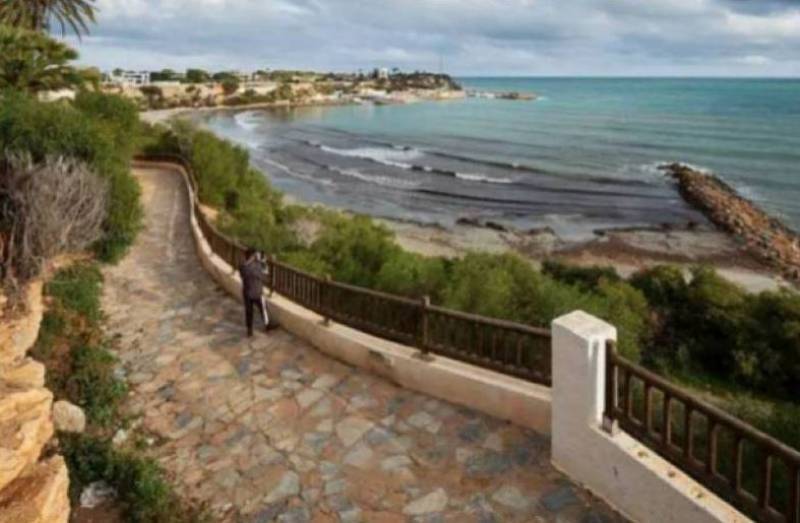 This short but scenic stretch of the famous Orihuela Costa cliff walk has been closed since December 2021, when a court ruled that the land was privately owned and had never been legally expropriated. Since then, locals and visitors have had to take a two-kilometre detour to get around the missing 60-metre section.
This short but scenic stretch of the famous Orihuela Costa cliff walk has been closed since December 2021, when a court ruled that the land was privately owned and had never been legally expropriated. Since then, locals and visitors have had to take a two-kilometre detour to get around the missing 60-metre section.At one point, the homeowners asked for an eye-watering €3 million for just 227 square metres. When negotiations stalled, the case went to the Provincial Jury, which ultimately sided with the City Council’s much more modest valuation of €26,180.
With the figure now set, the council is applying for funds from the Treasury to move ahead. A total of €600,000 has been allocated in the 2024 budget to cover both the cost of the land and the improvement works needed to reopen the path.
Meanwhile, just up the coast in Torrevieja, an early morning accident made headlines when a 79-year-old foreign woman drove her car off the Paseo Juan Aparicio promenade and onto the rocky shore below.
The incident happened around 6am on Tuesday April 22. The woman had just left a waterfront building’s car park when, for reasons still under investigation, her car crossed over the low pedestrian walkway and flipped onto its side. It came to rest against a concrete wall that separates the promenade from the sea.
The woman was trapped inside, as the driver’s side door was pinned against the ground. Emergency teams carefully removed her in the dark and treated her for minor injuries before taking her to Torrevieja University Hospital.
Witnesses said she may have been trying to steer around a large fixed terrace belonging to a nearby restaurant.
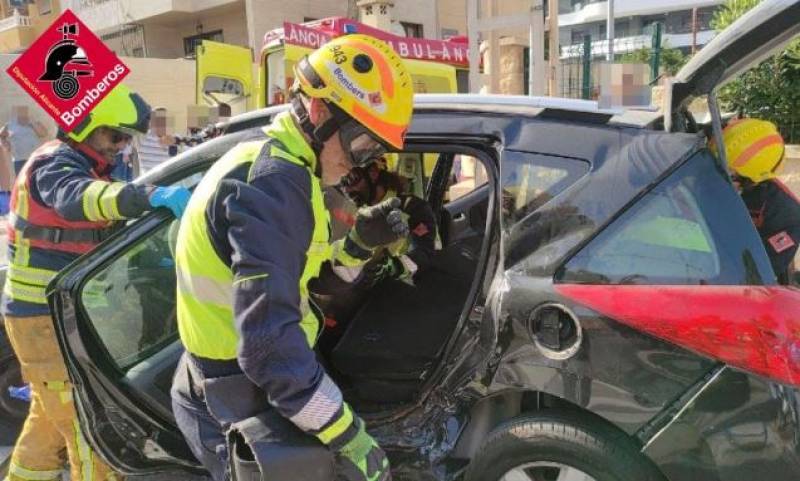
Back in Orihuela Costa, frustration with the local government has led residents of Campoamor to take matters into their own hands. They’ve formed the Costa Campoamor Neighbourhood Association, or Asociación de vecinos Costa Campoamor, to demand action on long-standing infrastructure issues they say have been ignored for too long.
The new group quickly got to work. On March 24, they sent a letter to Councillor Manuel Mestre requesting a meeting and outlining urgent concerns. At the top of the list is the clearing of riverbeds and ravines running through urban areas, which residents say are a major fire and flood risk. Other issues include crumbling roads, missing footpaths and broken public rubbish bins.
The new association isn’t working alone. It plans to collaborate with other coastal advocacy groups, including Unidos por la Costa, to strengthen their voice and push for long-overdue improvements.
And it would seem that their timing couldn’t be more critical. Firefighters and environmental experts are sounding the alarm over the wildfire risk facing Alicante’s forests this summer. The outlook, they say, is grim.
More than one million pine trees have died across the province due to the severe drought that stretched from 2023 into 2024. Most of the dead trees are still on the ground, creating a dangerous build-up of dry, flammable material in areas like Marina Alta, Marina Baixa, Baix Vinalopó and Vega Baja.
The Ministry of the Environment has managed to remove around 22,500 trees so far, but that’s only a small fraction of the total. According to Luna Morcillo, a PhD researcher at the University of Alicante and CEAM, this build-up of dry wood significantly increases the intensity and speed of potential fires.
Preventive management, she says, is now critical.
From the front lines, firefighters are echoing that message. Vicente Ballester, head of the Mutxamel Heli-transport Unit, said that “the situation in the mountains is not worrying, it is catastrophic.”
With so much fuel on the ground, even a small fire could quickly become unmanageable.
Last summer, weather patterns like the humid easterly winds helped slow drying in the forests. But this year, Ballester said, the threat is even higher, and avoiding disaster will depend as much on human behaviour as on weather conditions.
Andalucía
Police in Málaga are investigating a fatal shooting in what is believed to be a gang-related attack on the Costa del Sol. The incident took place in the early hours of last Sunday outside a burger restaurant in Mijas.
The victim, believed to be a 30-year-old Liverpudlian man, was reportedly shot multiple times and died from his injuries, before the emergency services arrived. Authorities have not yet confirmed the man’s identity, but investigators suspect it may have been a targeted incident.
The gunman is said to have fled the scene in a Cupra with foreign registration plates. That vehicle was later discovered abandoned and set alight, with firearms reportedly found inside. Police believe the car was deliberately burned in an effort to destroy evidence, possibly with the help of accomplices.
There was also panic in the Cádiz town of Arcos de la Frontera last Saturday when a 590kg bull named Infinito did what bulls do and charged. Instead of following the planned route during a traditional bull running event, Infinito took one look at the metal fence separating him from a large group of onlookers and decided he had other ideas.
The bull smashed straight through the barrier moments after being released from his holding box, sending the crowd scattering and injuring at least one person, who sustained a horn wound and broken bones. Several others suffered trampling injuries in the stampede that followed.
Local mayor Miguel Rodríguez said he “thanked God” the bull re-entered through the same gap it had escaped from, avoiding even more injuries. He confirmed that the injured person was stable and “minor” fractures had also been recorded. As for the barrier, he assured the public that it has now been reinforced with chains and ground anchoring.
Mayor Rodríguez seemed less concerned about the fate of the bull that had been trapped in a box and taunted to the point of ‘seeing red’, but animal rights group Pacma slammed the spectacle on social media, pointing to the fear, exhaustion and eventual slaughter the bulls often face once the festivities are over. This time, it seems Infinito got his own back, if only briefly before being ritualistically slaughtered.
Just off the coast of Cádiz, an orca got into a spot of trouble in Tarifa this week after becoming tangled up in floating debris. Luckily, marine rescue teams from CREMA (Centre for the Recovery of Marine Animals) were on hand to help.
The young adult was part of a local pod roaming the Strait of Gibraltar and had rope and plastic waste wrapped around its body. Rescuers carefully freed it and it rejoined its group safely. A happy ending, but a reminder of how harmful sea litter can be for marine life .
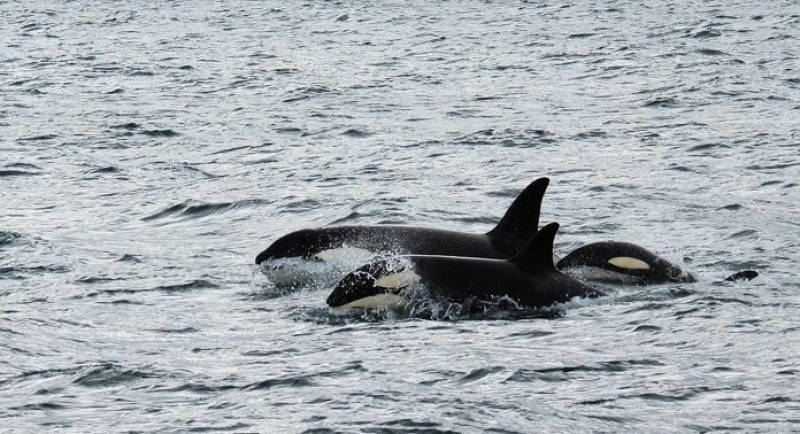 The orcas weren’t quite finished, though. In a separate encounter in the Strait of Gibraltar, an Italian sailor had a run-in with a family of the curious creatures when they decided to take a swipe at his yacht.
The orcas weren’t quite finished, though. In a separate encounter in the Strait of Gibraltar, an Italian sailor had a run-in with a family of the curious creatures when they decided to take a swipe at his yacht.“They just smashed the rudder clean off,” he said, after spotting the orcas circling his boat before one struck with enough force to break it. He managed to steer manually and reach land safely. These encounters have started to become a regular oddity in the area, with orcas increasingly showing an interest in boat rudders. Let’s just say, if you’re sailing through the Strait any time soon, keep an eye on your steering.
And finally, toilets might not be the most glamorous of news items, but Marbella is ‘flushed’ with pride at its newest addition to the seafront facilities. Forty brand-new public loos are being installed along the promenade, and they are anything but bog-standard.
The units, each with four restrooms, are designed to be modern, accessible and eco-friendly. They will include features like baby changing tables, security cameras, solar panels and automatic opening hours from 7am to 11pm. They’ll be located at beaches, beach bars and walking areas across the city.
Funded with a €1.2 million investment co-financed by the regional government, the project aims to have all facilities ready for the high season. Local officials have urged the public to take care of the new toilets, which are built to be graffiti- and vandal-resistant.
The local council says the new toilets are part of a wider effort to upgrade facilities before the summer crowds arrive. So, next time nature calls while you’re out enjoying the Marbella sun, rest assured as help is just around the corner!

You may have missed…
- Murcia’s Santiago de la Ribera stars in Nutella's latest sunrise campaign.
Fans of Nutella, brace yourselves! The yummy chocolate spread has chosen Santiago de la Ribera’s distinctive jetty as one of the featured locations appearing on its labels – part of its new ad campaign “A good day starts at home” to show beautiful sunrises across famous Spanish landmarks. Are you going to go out and buy your Mar Menor-themed jar of Nutella? - Spanish Court rules five-day family care leave doesn’t end with hospital discharge.
A new ruling from Spain’s National Court has clarified when employees can take the full five days of paid leave to care for a seriously ill or injured family member. The court confirmed that the leave does not have to end the moment a relative is discharged from hospital. - Man accused of beating his stepson to death in France arrested in Murcia.
A man was arrested by the National Police early on Sunday morning in Murcia, in connection with the death of his 18-year-old stepson in France. - Spain is the only large economy that will dodge the effects of the US global trade war.
The IMF says that Spain will be the only large global economy that will dodge the effects of Trump’s tariff war, if you can believe it. - Binter offers flights between Murcia and the Canary Islands from €85.
Canary Islands airline Binter has announced a fresh wave of discounted fares as part of its latest ‘Bintazo’ promotion, offering the chance to fly from the Canary Islands to 14 domestic Spanish airports, including the Region of Murcia International Airport, with fares starting at €85 each way.
So there we have it for another week. Have a great weekend, all, and we’ll be back next week!
Ta-ra!
Contact Murcia Today: Editorial 000 000 000 /
Office 000 000 000











